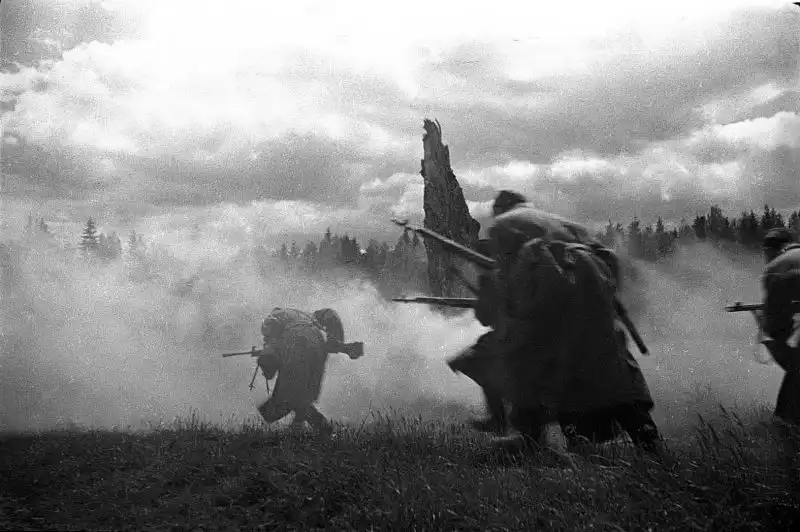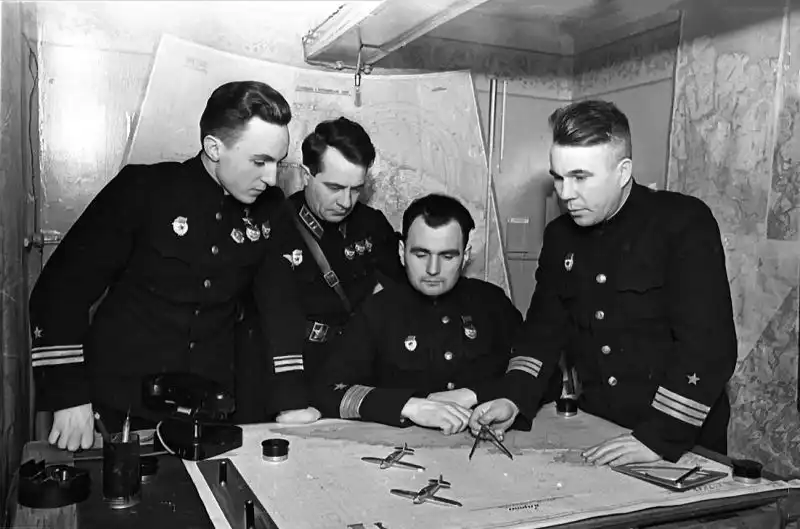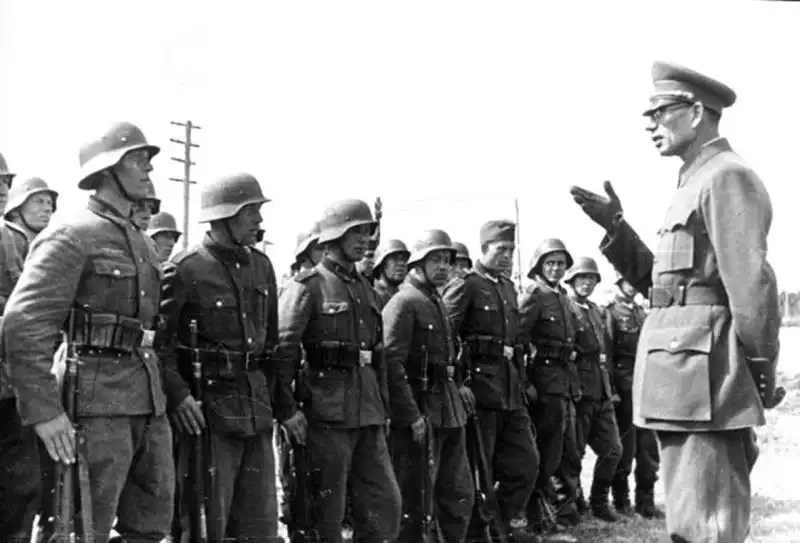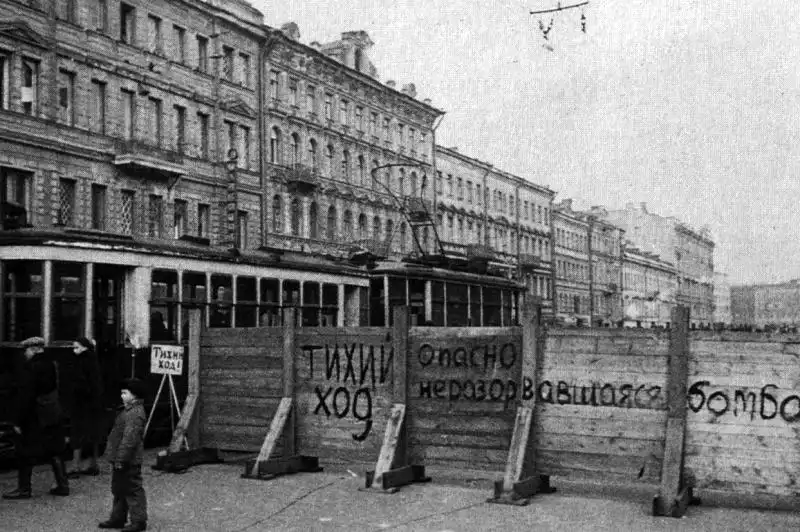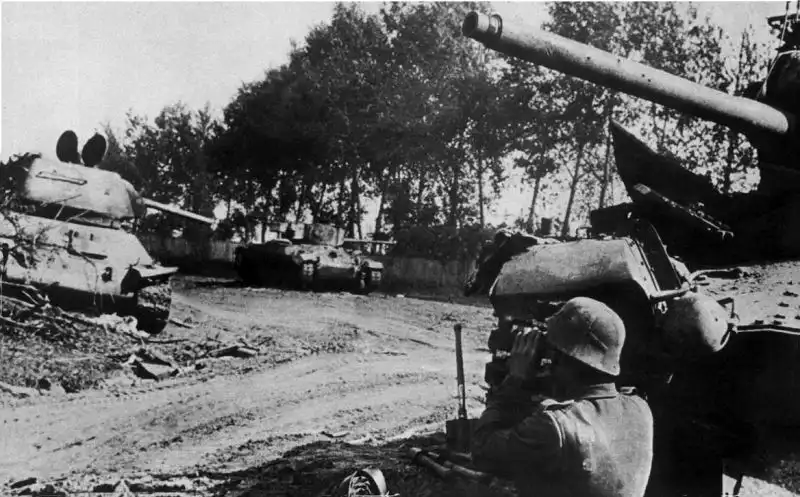Soviet Infantry at the Shores of Sevastopol’s Southern Bay, May 1944
October 15, 2025 - Reading time: 4 minutes
Soviet infantry on the shore of Sevastopol’s Southern Bay after liberation, with a destroyed German StuG III in the foreground. May 1944.
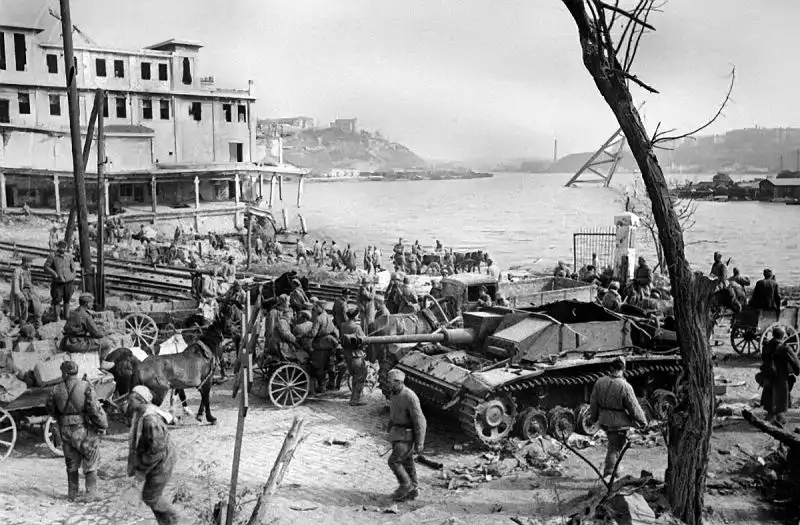
This striking World War II photograph shows Soviet infantry on the shore of Sevastopol’s Southern Bay shortly after the city’s liberation from German and Romanian occupation in May 1944. The soldiers stand amid the ruins of the once-fortified port, with the wreckage of a destroyed German StuG III assault gun visible in the foreground — a silent witness to the fierce battles that reclaimed the city.
The Battle for Sevastopol (1944) marked the final act of the Crimean offensive, in which the Red Army’s 2nd and 3rd Guards Armies, supported by the Black Sea Fleet, broke through Axis defenses and liberated the strategic port city. After nearly three years of occupation, the victory had both military and symbolic importance: Sevastopol had been one of the key strongholds of Nazi control in southern USSR.
The StuG III, Germany’s most widely produced assault gun, was designed to provide mobile artillery support to infantry and later used as a tank destroyer. By 1944, hundreds of these vehicles were lost during Soviet counteroffensives, including in the Crimean campaign.
This photograph, captured by Evgeny Khaldei, one of the most famous Soviet war correspondents, combines documentary precision with dramatic composition — soldiers facing the calm sea, with traces of destruction still fresh around them.
Technical photo data:
📍 Location: Sevastopol, Crimea, USSR
📅 Date: May 1944
📝 Event: Liberation of Sevastopol, Red Army on the Southern Bay shore
📷 Author: Evgeny Khaldei
- Soviet infantry Sevastopol 1944
- StuG III destroyed in Crimea
- Evgeny Khaldei Sevastopol photo
- Liberation of Sevastopol May 1944
- Red Army recaptures Sevastopol WWII
Category
Search
Categories
- Unidentified WWII Photos (12)
- World War II Photos 1937 (1)
- World War II Photos 1938 (1)
- World War II Photos 1939 (3)
- World War II Photos 1940 (5)
- World War II Photos 1941 (99)
- World War II Photos 1942 (58)
- World War II Photos 1943 (50)
- World War II Photos 1944 (77)
- World War II Photos 1945 (40)
- WWII and Postwar Photos 1946 (1)
